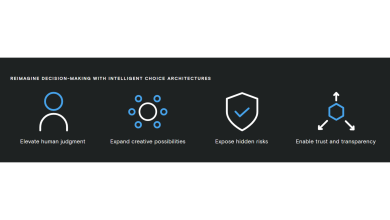
Joe Gibson, Director of Digital Transformation at 4C Associates, warns that the rush for digital speed often creates fragility and distraction, proposing the concept of “AI-second thinking” as the necessary antidote to ensure sustainable transformation.
Procurement and finance are running faster than ever. But speed without direction creates fragility. Too many functions live in a state of digital liminality: one foot in legacy processes, one foot in untested tools. Artificial intelligence, in particular, has become the shiny object. To some, it’s the golden bullet. To others, it’s an overwhelming distraction driving what can only be called transformation dissonance.
The scale of technology adoption is staggering. Organisations now run on an average of 371 SaaS applications in 2025, up from 242 in 2023 (Demand Sage, 2025). Procurement alone uses 10–15 distinct solutions – from contract management to e-invoicing – a number expected to grow by 40–50% by 2030 (ZipDo, 2025). Yet more tools don’t mean more transformation. They often mean fragility.
This is where organisations fall into the trap of digital distraction, perpetually chasing every new tool without building the foundations. The antidote? Practising AI-second thinking.
AI-second thinking means resisting the impulse to make AI (or any tool) the first solution. Instead, it starts with problem definition, governance, data integrity, and people. AI and digital tools come second, as enablers of a well-designed operating model.
Contrast this with digital distraction: prioritising tools over transformation, dashboards over clean data, or bots over process discipline. This is all corporate noise. It’s a distraction.
Digital distraction means the prioritising new tools. Think flashy dashboards, or shortcuts over the work that makes change sustainable: clean data, aligned teams, risk controls, and scalable systems. It’s tempting. After all, who doesn’t want automation, AI, or speed?
But when procurement or finance leaders adopt these without embedding them into a robust operating model, the downside can be severe.
Real-World Examples of Fragile Fixes
- Bournemouth Council – Hastily replaced an SAP ERP with Oracle. Estimating full implementation costs of £39million. Unfortunately, and after an addition £90million was pumped in, it still wasn’t live. Poor governance, project management and lack of in-house expertise were to blame (CIO, 2025)
- Target Canada – Rushed supply chain and procurement system rollouts led to empty shelves and overstocked warehouses. With $2bn in losses, Target exited Canada entirely. A classic case of speed without structure (Dolfing, 2019)
- Unilever – A positive contrast. Unilever integrated supplier risk, ESG, and compliance into a single platform. But it wasn’t just about a technology deployment. Governance, supplier collaboration, and structured rollout ensured resilience instead of fragility (Unilever, 2022).
The difference? Unilever practised AI-second thinking. The tools followed strategy, not the other way around.
Distractions cause fragility. But what enables fragility?
- Siloed systems and lack of end-to-end integration: New tools are bolted on rather than integrated with legacy platforms, leading to gaps, manual handoffs, and data inconsistency
- Insufficient planning and governance: Without clear ownership, standards, controls, and oversight, digital initiatives drift
- Overemphasis on speed over learning: Leadership often pushes for quick wins, hyper-automation and pointless dashboards before the organisation has fully understood process flows or built data hygiene.
- Distraction by hype: AI dominates the headlines, but as Terence Mauri (2024) reminds us, ‘Attention is the new oil’. Other distractions include necessary fixes (e.g. procurement policy, supplier performance metrics, digital literacy) get deferred in favour of something new, that ends up tactical.
Fragility is Dangerous
When structure is missing and a programmatic view isn’t taken to technology deployment, several challenges are often accrued:
- Costs creep up (unexpected vendor payments, non-compliance fines).
- User adoption falters: people revert to old ways.
- Data quality suffers, meaning insights are misleading or wrong.
- Risk increases (security, regulatory, supplier risk).
- Long-term ROI doesn’t materialise (rework costs, spend isn’t managed).
To avoid fragility in digital transformations, organisations should:
- Begin with governance: clear roles, decision rights, alignment between procurement, finance, IT.
- Establish standards and policies: data and project governance and risk controls up front.
- Invest in people: upskilling, reskilling, stakeholder alignment for change absorption
- Adopt a phased approach: pilots, learning loops, feedback, iterative improvement.
- Measure properly: beyond nose-count metrics (speed, cost savings), track quality, compliance, risk, stakeholder satisfaction (NPS).
Much has been written about the future of the procurement and finance profession. The majority of analysts (experts) are AI-first, whilst influencers obsess with the unproductive fixation of chasing agent-based-hype. Functions won’t win by those with the most apps, the flashiest AI, or the fastest pilots. It will be won by those who turn digital distraction into digital discipline.
Importantly, it means making technology the second move, not the first. By embedding AI-second thinking, organisations create resilience but stopping technical debt at the source, unlock sustainable value, and ensure transformation delivers, without becoming both functionally and digitally fragile in the process.



